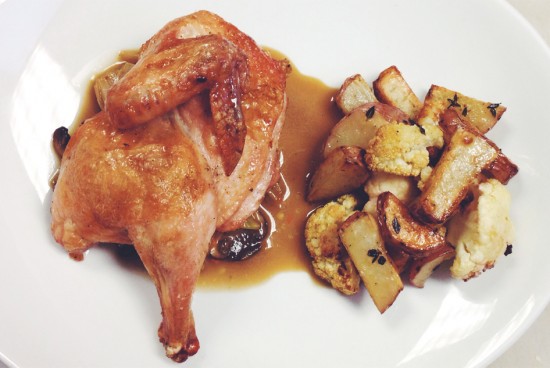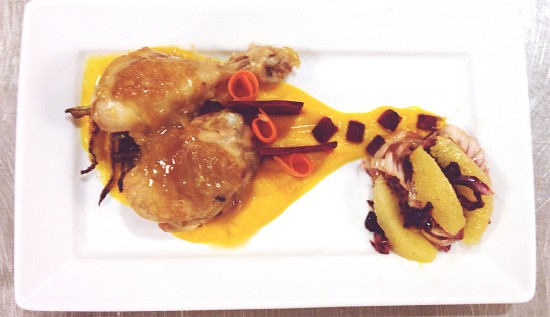For most of my time in culinary school, I’ve been learning time-tested techniques or following a recipe “to a T.” So with the exception of a few lessons in modern plating, the ICE “market basket challenge” was the first time I was asked to truly cook creatively for my Chef Instructor and classmates.
These Chopped!-style lessons, which culminate in an exam of the same format, have been among my favorite moments in the program. After months of following specific directions, I knew that having a blank canvas with only the specification to use “bacon, scallops and tomatoes” or “half a chicken” would be the ultimate test of what I had really learned.
To understand what I experienced during those lessons, it’s important that you know a little about my cooking skills before I entered the Culinary Arts program. I was an above-average home cook—highly knowledgeable, but with no technical training. Cooking dinner for 15 was a task I had already accomplished on numerous occasions, and experimenting with new ingredients is one of my favorite hobbies.
So as I approached the “market basket” lessons, I was actually most anxious that I might feel I had not advanced significantly as a cook during the past several months of culinary school.

However, over the course of our two market basket “practice days” and exam, I realized how dramatically I had underestimated the transformation of both my skills and my confidence over these past few months. From pan sauces to warm vinaigrettes, creamy purées to perfectly cooked proteins, I honestly couldn’t believe how easy it felt to execute these dishes—and how proud I was of the results.
Now, before you call me “cocky,” let me be the first to say that there was still improvement to be had. For example, when I served a delicious and well balanced—but rustic—half poussin, Chef Sabrina Sexton challenged me to elevate my presentation style. So, leaving behind the bistro style that came most naturally to me, I felt motivated to tackle a true fine dining presentation for my final exam. Integrating a rainbow of colors, a balance of sweet and bitter flavors and at least seven different textures on a single plate, my final exam dish felt like an overwhelming success.
While plating the many components of my “high end” braised chicken—with roasted and raw beets, sautéed radicchio, squash purée and carrot ribbons—was far more difficult than my bistro-style poussin, the flavors and textures were spot on, and never in a million years would I have imagined that I could have come up with such a dish. With a gentle push from Chef Sabrina, I realized for the first time, the incredible possibilities that could be available to me as a cook.

As we move toward graduation—and I plan a three-course appetizer menu to serve 60 guests—I’m all the more grateful for this “market basket” experience. While it taught me about time management, multi-tasking and devising a dish from scratch, it also taught me not to play it too safe. At the end of the day, cooking is the most fun when there’s a little risk involved—or, as some might prefer to call it, when you’re learning something new.
Want to tap into your creative potential? Consider a career in Culinary Arts.




